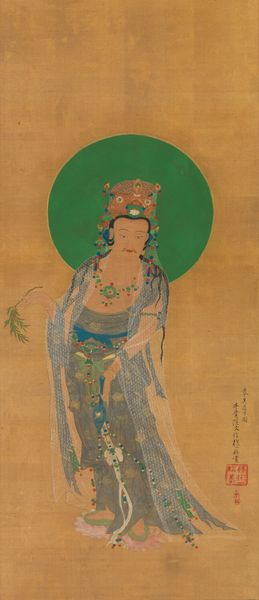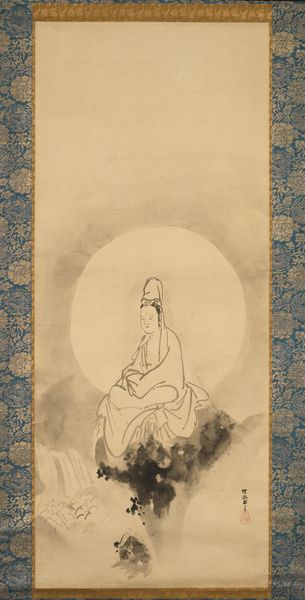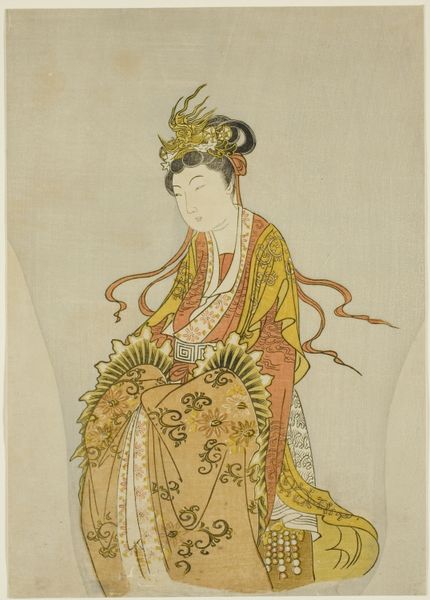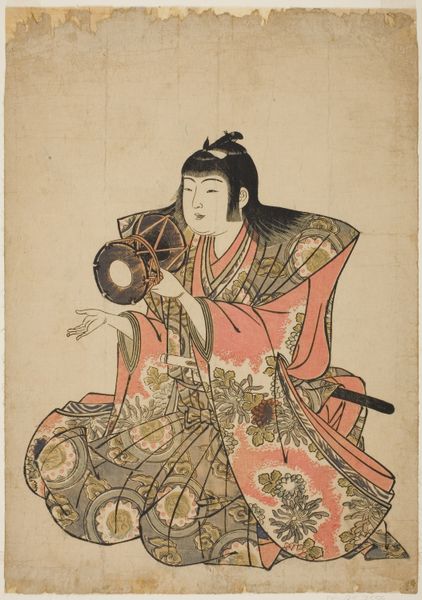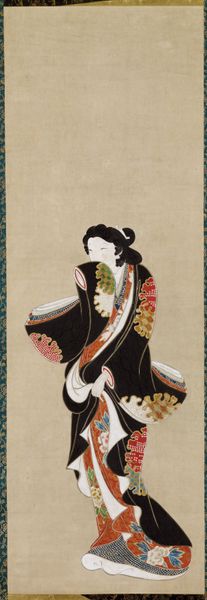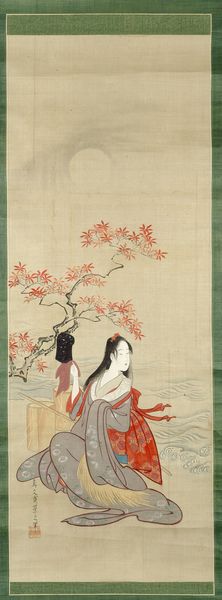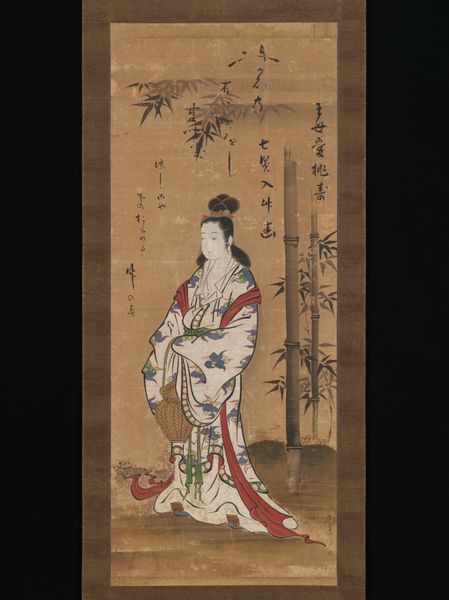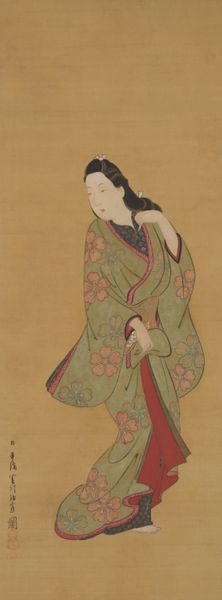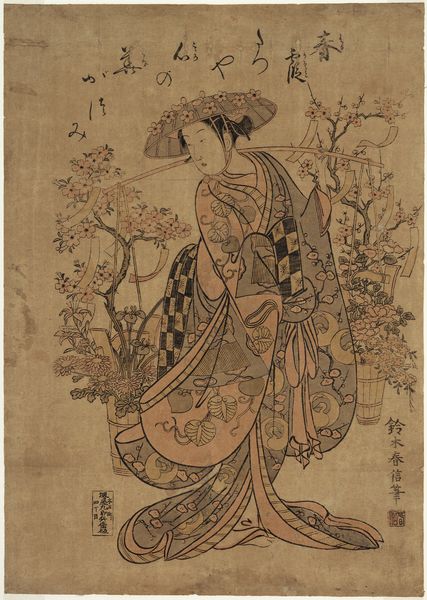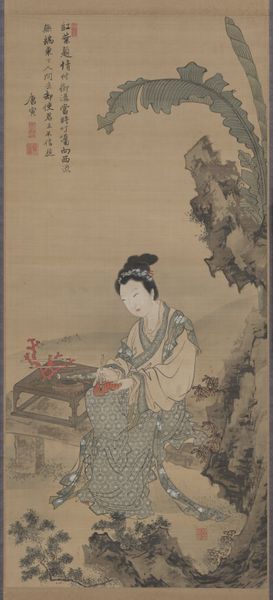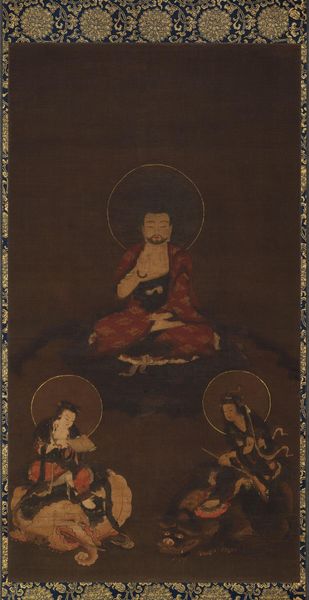
silk, painting, textile, hanging-scroll, ink
#
portrait
#
silk
#
painting
#
asian-art
#
textile
#
ukiyo-e
#
japan
#
figuration
#
oil painting
#
hanging-scroll
#
ink
#
underpainting
#
orientalism
#
history-painting
Dimensions: 24 9/16 × 14 1/4 in. (62.39 × 36.2 cm) (image)61 7/8 × 19 3/8 in. (157.16 × 49.21 cm) (mount, without roller)
Copyright: Public Domain
Kiyohara Yukinobu painted ‘Monju on a Lion’ on silk in seventeenth-century Japan. This hanging scroll depicts the bodhisattva Monju, associated with wisdom, seated on a lion, a traditional symbol of royalty and strength. Consider the role of Zen Buddhism in shaping the cultural values of the Edo period. Zen’s emphasis on meditation and direct experience influenced the arts, fostering a taste for simplicity and contemplation. The image creates meaning through visual codes that draw on religious and philosophical beliefs. Monju's serene expression and relaxed pose convey a sense of inner peace and enlightenment. The prominence of female artists like Yukinobu also reflects the evolving dynamics of artistic production during this era. Although the art world was largely dominated by men, women found opportunities to express their creative talents. Delving into the history of Japanese Buddhism and the social context of the Edo period enables us to grasp the multilayered meanings embedded in this image. The study of primary sources such as religious texts, historical documents, and artistic treatises deepens our understanding.
Comments
minneapolisinstituteofart about 2 years ago
⋮
The bodhisattva Monju (Sanskrit: Mañjuśri) is depicted here reading a sutra on the back of his vehicle, a blue lion. This painting once served as the right-hand scroll of a triad of Buddhist deities centered on the historical Buddha, Shaka (S: Shakyamuni). Monju and his blue lion would have been balanced on the far left by the bodhisattva Fugen (S: Samantabhadra), who rides a white elephant.
Join the conversation
Join millions of artists and users on Artera today and experience the ultimate creative platform.
